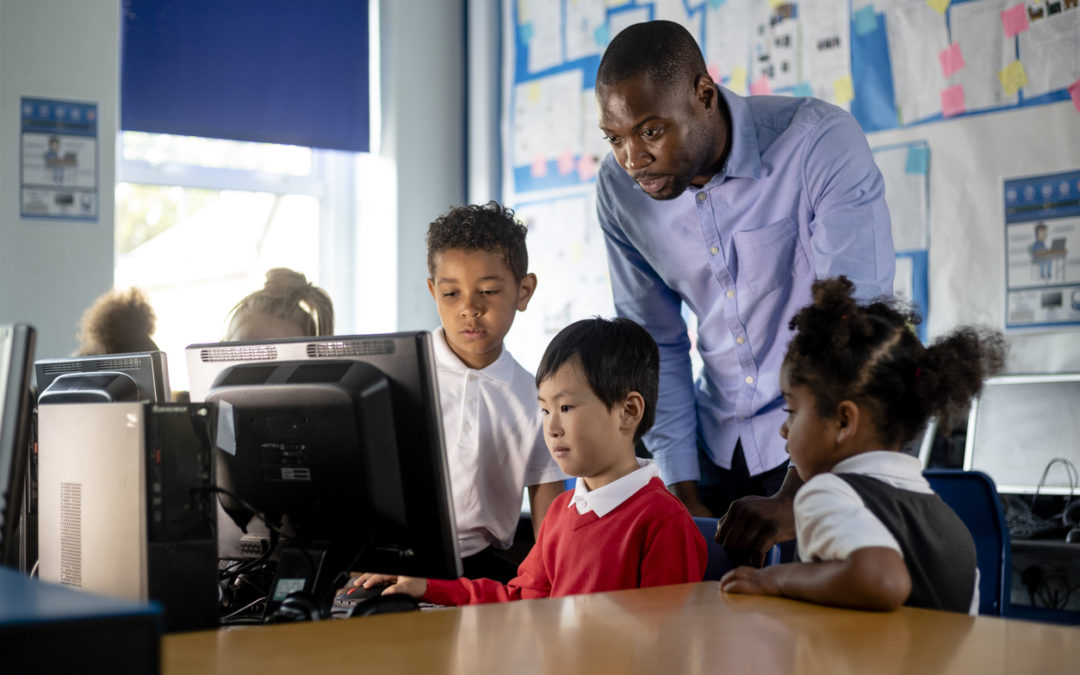5 Key Content Areas for K-12 Technology Curriculum
Whether you are developing a technology curriculum yourself or evaluating technology a program such as EasyTech, there are some crucial subjects the curriculum should cover. Here are 5 key content areas to include in your technology program:
1. Computer Fundamentals
One of the first content areas to look for in technology curriculum is computer fundamentals. This includes mastering the different components of a computer, their functions, and how they work together. Students should also be able to identify the best hardware or software for a task and be able to use it appropriately. Not only will this help students to use a computer effectively, but these skills will also translate to other types of devices.
2. Keyboarding/Typing
Another important technology skill for students to learn is keyboarding. Keyboarding (or typing) means mastering the use of a keyboard to type quickly, effectively, confidently and accurately. Typing has become a necessary skill in education as well as in most careers. Students utilize typing skills in assignments – and, critically, in online tests – from elementary school through college, and many will require this skill in the workforce as adults.
3. Internet Usage & Communication
The internet is used to communicate information of all types. A component of technology curriculum for students should include learning to use the internet for sending or receiving information safely and effectively. For instance, students should learn how to perform search queries, how to validate sources, and how to use different online tools to communicate with others.
A strong component of this subject should include digital citizenship and online safety and security. Students should learn how to protect personal information and communicate without putting themselves–or others–at risk.
4. Online Safety & Digital Citizenship
Learning safety and security while using technology is a crucial component of technology curriculum for students. While so much communication has moved online, students are at risk not only for having personal information stolen or experiencing viruses or other digital attacks, but also for cyberbullying, inappropriate material or interactions, and more.
Students should have robust digital citizenship and online safety instruction that allows them to learn about the different threats they may face online and how to avoid or mitigate them. It should also teach them to be a good digital citizen by understanding how to avoid plagiarism, respond to cyberbullying, and conduct themselves safely and maturely.
5. Word Processing, Presentation Tools, Spreadsheets & Databases
While there are limitless types of software a student may use over their lifetime, there are a few basic tools that they will most likely be required to use at some point during their school or professional career. These include word processing software, spreadsheets, presentation tools and basic databases. When students are able to master using these tools, it helps to provide foundational skills that can be applied to a wide range of other software and applications, as well as prepare students for numerous career pathways.
Explore EasyTech
EasyTech is Learning.com’s widely-used technology program for K-12 students. With a comprehensive computer technology curriculum available by content area or grade band, EasyTech can help students develop crucial technology skills they will use for the rest of their lives.

Learning.com Team
Staff Writers
Founded in 1999, Learning.com provides educators with solutions to prepare their students with critical digital skills. Our web-based curriculum for grades K-12 engages students as they learn keyboarding, online safety, applied productivity tools, computational thinking, coding and more.
Further Reading
How Computer Fundamentals Equip Students for Success
Understanding the basics of computer science is no longer optional for students to be future-ready, as the world becomes increasingly reliant on...
Teaching Students to Think Like Programmers | Learning.com
Recent discussions in education emphasize the importance of teaching students to think like computer programmers. Computational thinking involves...
Defining Computational Thinking
Computational thinking is a problem-solving process that involves various techniques and thought processes borrowed from computer science. It...




